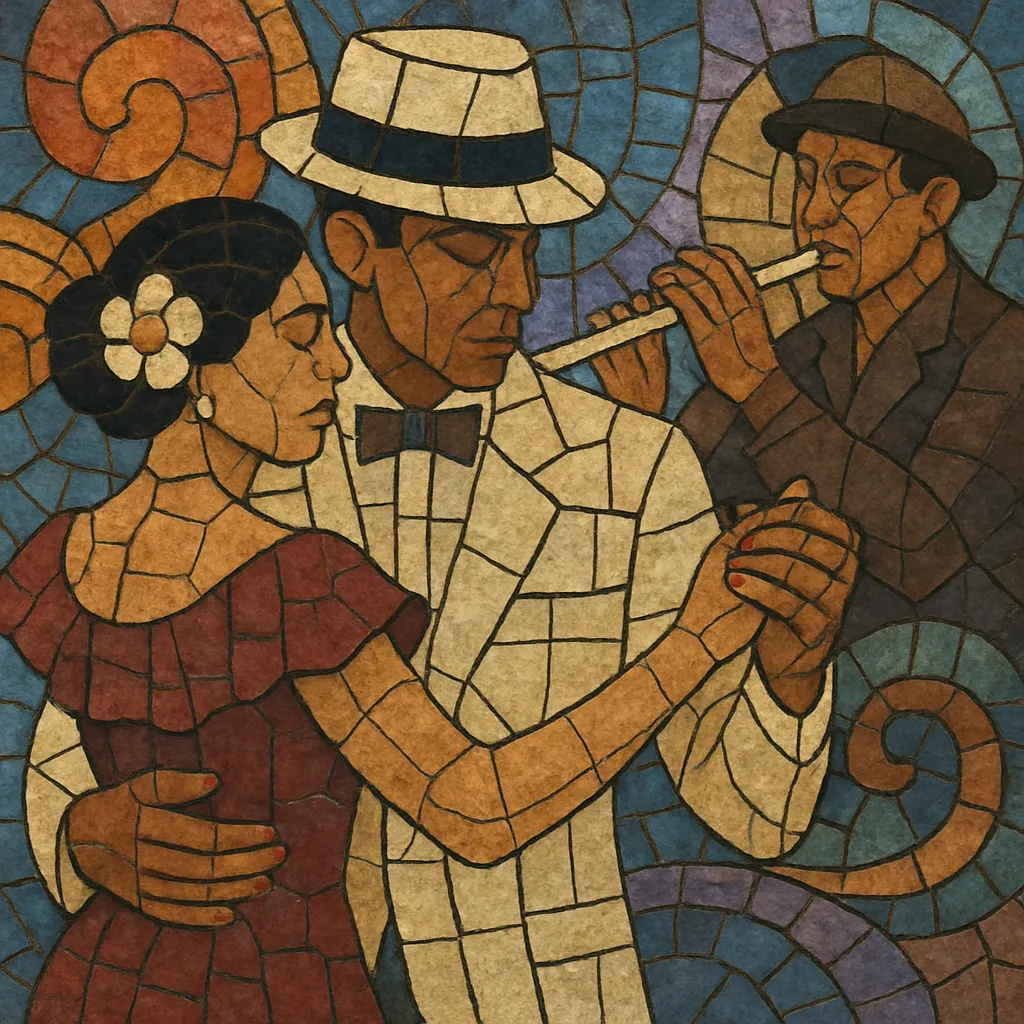Danzón is a refined Cuban dance-music genre that emerged in the late 19th century and became the island’s national dance. It is characterized by an elegant, measured tempo, a promenading introduction called the paseo, and a succession of graceful, melodically rich themes.
Rhythmically, danzón is anchored by Afro-Cuban syncopations such as the tresillo and the cinquillo, articulated by güiro and timbales (paila) over a steady bass. Traditionally performed by charanga ensembles—featuring wooden flute, violins, piano, string bass, güiro, and timbales—the style epitomizes salon sophistication while retaining a distinctly Afro-Caribbean rhythmic identity.
Danzón crystallized in Cuba during the 1870s–1880s, evolving from the Cuban contradanza/danza tradition and absorbing European ballroom elements such as the waltz, polka, and mazurka alongside Afro-Cuban rhythmic cells. In 1879, bandleader and composer Miguel Faílde premiered “Las Alturas de Simpson” in Matanzas, a milestone often cited as the genre’s formal birth. Early danzones were played by orquestas típicas (with brass and winds), but soon shifted to the more intimate and elegant charanga format (flute, violins, piano, bass, güiro, timbales).
Classic danzón structure opens with the paseo—an 8-bar (often repeated) introduction inviting dancers to promenade—followed by one or more thematic sections. The rhythmic feel relies on the tresillo and especially the cinquillo, which impart a poised but syncopated swing. Around 1910, José Urfé’s “El Bombín de Barreto” integrated son montuno elements into danzón, energizing the closing sections and pointing toward later hybrids.
The charanga idiom blossomed with composers and bandleaders like Antonio María Romeu, whose prolific output set a lyrical standard. In 1929, Aniceto Díaz created the danzonete by adding a sung refrain, bringing vocal charm to a largely instrumental form. In the late 1930s and 1940s, Antonio Arcaño’s orchestra—powered by the López brothers, Orestes and Israel “Cachao”—pioneered the danzón-mambo (sometimes called “nuevo ritmo”), thickening rhythmic interplay and accelerating the music. These experiments directly seeded the standalone mambo of the 1940s and, soon after, the cha-cha-chá.
Danzón traveled widely, taking deep root in Mexico—especially in Veracruz and Mexico City’s dance salons—where danzoneras (large salon orchestras) kept the tradition vibrant through figures like Acerina. In Cuba, charanga ensembles such as Orquesta Aragón carried danzón’s elegance into the era of cha-cha-chá, pachanga, songo, and timba. Today, danzón stands both as a living dance tradition in Cuba and Mexico and as a foundational pillar for much of 20th-century Afro-Caribbean and Latin dance music.


